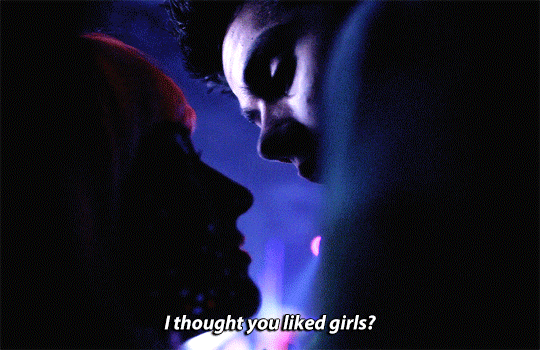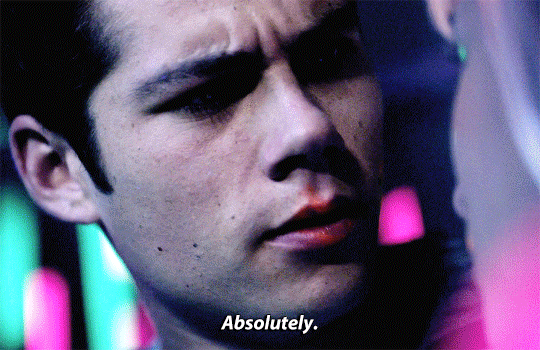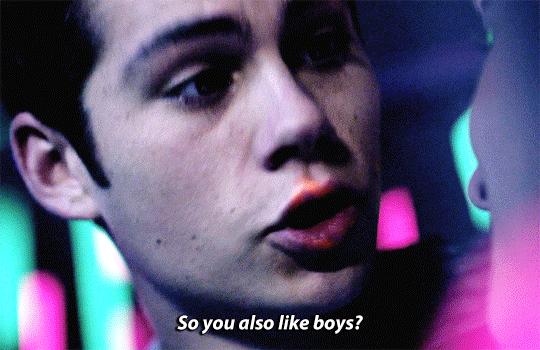#man discovers bisexuality. immediately erases his own memory to not think about it
Text






TEEN WOLF (2011-2017)
#apparently i've lost my fucking mind. sorry#teen wolf#twedit#mine#stiles stilinski#caitlin teen wolf#man discovers bisexuality. immediately erases his own memory to not think about it#jeff davis i am eternally outside your house.#flashing gif
2K notes
·
View notes
Text
Transgender book reviews: “The Riddle of Gender”, by Deborah Rudacille
This book is written from an outsider's perspective; it's dated, biased, subjective, essentialist, sometimes otherizing, and too eager to jump to conclusions; and it also erases non-binaries and gender fluidity in general. What a shame, then, that it's so good. It's the best book on transgender issues I've found so far. I so wish I could just buy copies for everyone I know, without needing to include these caveats and salt grains.
I did not expect, from the title and blurb, to find a history of the modern concept of "transgenderism" (and its older cousin, the medical concept of "transsexualism"); but find it I did, and it was a pleasant surprise. I've came to this book to take a break from the richly informative but monumentally BORING Trans bodies, trans selves, which is, like, 700 pages of Generic Inclusive Activist Prose droning on and on forever (“Do trans people like pickles? Some of us find a newfound love for pickles, while for others, the pickle cravings remain unchanged. Some of us always knew we loved pickles, while others do, in fact, hate pickles” and so forth). Rudacille, by contrast, actually knows how to write engaging prose; I devoured the entire thing in one go. You will learn about the pioneering humanitarianism of the German sexologist Magnus Hirschfeld and the tragic destruction of his research by the Nazis; about how the notion of "transsexualism" came into being, and why it's classified as a psych disorder; about the role of trans people in the Stonewall riots, and the some-are-more-equal-than-others relationship between LGB and T; about John Money's well-intentioned but disastrous theory of gender as social construction, and how it led to the abuse of intersex people; about the first few attacks of transgender-critical feminists (early on, ironically, by lesbian feminists – ironically because the anti-trans arguments almost exactly mirror those once made against lesbians by other feminists), and so forth. One leaves the book with a great feel for how the modern Standard Transgender Narrative came into being; for the tense interplay between the medical establishment and those who, depending on the point of view, they either serve or “fix”.
The book has its own framing narrative: Baffled by a friend's decision to transition to male, Rudacille embarks on a personal quest to try and understand the trans condition. She quickly discovers the devastating power of gender dysphoria, how deeply rooted it is, how it can show up in one's earliest memories and what a terrible yoke it is on one's entire life. She finds out that the condition is widespread and consistent, independent of society, socialization, or mental health issues; she finds out how visceral and vicious is our society's repression of trans people; and how, again and again, they find they must nonetheless defy everything and everyone and transition. “It was this or suicide” is the common sentiment. Putting her faith in science, Rudacille wants some concrete answer on the etiology (the causes) of this curious condition – don't we all? – and, spoiler alert, she finds a plausible one in endocrinology. The book's conclusion comes on hard in favor of the hypothesis that transgenderism is biological, and conditioned by variations in uterine exposure to sex hormones. From the point of view of 2017, I believe that conclusion to be premature. There's a lot going for a biological etiology; Rudacille's book argued forcefully for better investigation of the effects of diethylstilbestrol (DES) exposure on male fœtuses, an issue little-studied at the time, and she was proved to be correct in this (in a study of 500 male-sexed people exposed to DES, 100 reported gender dysphoria or transgenderism; a ratio orders of magnitude higher than the general levels). But that's far from explaining the whole story. We've been finding hints of genetic components, for example, and comorbidity with autism and certain other interesting characteristics, and epigenetic factors like stress levels in pregnancy. Reliability issues with science in general (over-reliance on poor statistics – notoriously the broken methodology of null-hypothesis significance testing; over-generalization from limited samples; lack of replication, etc.) have added uncertainty to basically every field these days, and transgender studies are no exception. Consider, for example, the ratio of one's index finger to the ring finger, an indicator of uterine androgen exposure; this ratio is higher in typical females than males. Several studies have found "feminized" ratios for MtF transgenders, and "masculinized" ratios for FtMs; then again some studies failed to replicated it; then newer studies did replicate the early correlations. What are we to make of this, at a practical level? “No one knows for sure yet” is the only reasonable conclusion. In this light, Rudacille's confidence in the simple endocrine solution sounds much too self-assured.
In my view, the most plausible hypothesis at this point is that transgenderism is at least partly biological. Even at this early stage of research, there's just too much promising data to ignore (though it might well be the case, for example, that biological factors are only one among several possible causes, or one among several necessary ones). The fundamental riddle of gender for me is, then: How does all that bio stuff relate to symbols and schemas that are, clearly and undeniably, socially constructed? (How can a gene or hormone relate to feeling happy when wearing a dress, given that dresses only code as “feminine” in certain cultures?). Despite Rudacille's elegant, confident prose, the puzzle remains stubbornly unfinished, the final picture unclear; but her book does serve as a good introduction to the science of trans people, helping us fit together a few piecesr.
In light of this uncertainty, it sometimes feel like this book wants to have its cake and eat it too, as it regards gender essentialism. Early parts of the book tell first-person experiences as part of the argument that transgenderism is innate; but the author picks and chooses only those experiences that fit the most strict Standard Transgender Narrative, viz. "I always knew I was a girl, trapped in a boy's body" and so on. Much later, she does recognize that, while most trans people report early childhood dissatisfaction with gender, not all of them report early childhood certainty of identity (e.g. a lot of trans women didn't think of themselves as women at first; they just felt really uncomfortable in the role of man). Despite these different experiences popping up in the middle of the book, despite her laudable efforts to validate all kinds of people by interviewing a diverse assortment of individuals from several generations, by the conclusion Rudacille doubles down back again on the Standard Narrative, in order to reinforce the validity of the endocrine hypothesis. This is one example of the double-edged sword of essentialism: if gender reassignment should be supported solely because transgenderism has biological markers (and if, for example, one consequence of this etiology is being certain of one's identity already in early childhood), then what to do with people who don't have the markers, with those who don't fit the narrative? The correct answer is surely that the theory is limited and doesn't explain all cases; but the wrong conclusion, viz. that these people are “fake” trans, is all too easy to jump to. I can't help but feel like that a stronger case had to be made for a) the profound psychological impact of gender dysphoria, whatever its etiology, and b) the immediate relief and high success rates of gender reassignment therapy; these points are of higher urgency than etiological questions. Arguing that transgender people should have support because it's biological is a red herring, much like it is for the similar arguments involving homo- and bisexual people. If your case doesn't fit the Standard Narrative, or if you identify as genderqueer, fluid, non-binary etc., you might find yourself uncomfortable with parts of this book, as if it was arguing solely in favor of someone else. The supremely boring Trans bodies, trans selves, meanwhile, does a much better job of representing the true diversity of trans experiences.
In summary, Rudacille's research is partial and limited, and because she writes so well, these limits are not immediately obvious. The parts she does cover, however, are brilliantly covered, and I very much recommend this book to anyone interested on the topic.
3 notes
·
View notes